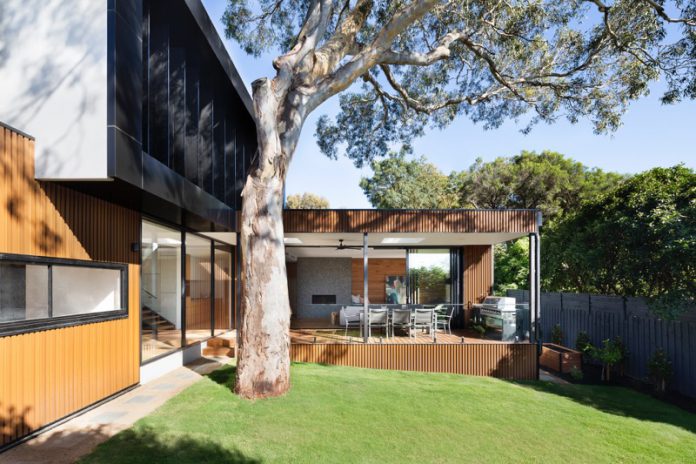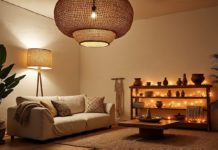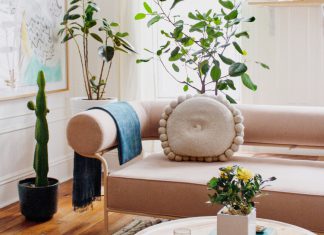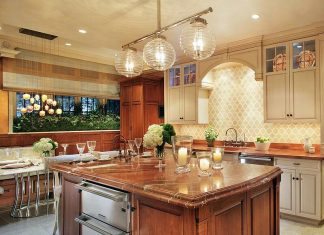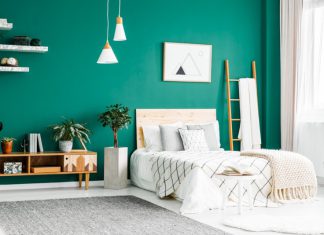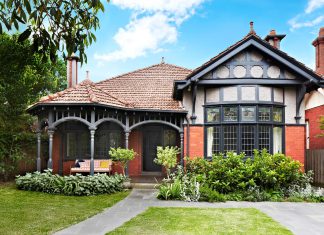The principles of modern outdoor decor deal a lot with unity, balance, and contrast. Without these principles, your outdoor area can quickly derail and become monotonous or chaotic.
This article discusses the various things to consider when trying to design your outdoor decor. You can use these elements to create an enticing atmosphere for your guests, no matter the season.
Of course, your location’s climate will determine how you implement these elements into your outdoor space. However, these rules ring true no matter your space’s style. Continue reading to learn how to use these modern outdoor decor principles to enhance your outdoor space’s quality.
Unity
Unity in modern outdoor decor consists of repetition and the consistency of your overall design. This doesn’t mean you incorporate the same elements over and over, resulting in a monotonous design. It means you develop themes that create a cohesive design that brings the whole together to create one theme.
As with a novel or movie, you have your main plot and sub-plots. With modern outdoor decor, you have a main theme and sub-themes that build on the main theme.
Balance
Balance creates a calming sense. You can use two elements of harmony in modern outdoor decor: symmetrical and asymmetrical. Symmetrical balance again ties everything together with the main theme. It creates a sense of finality and closure, while the asymmetrical balance adds interesting flavors to keep the onlooker on their toes.
Contrast and Harmony
Contrast and harmony build on the conflicting balance you create with your modern outdoor decor. Harmony unifies the various design elements you use, while contrast adds depth and layers to your modern outdoor decor.
Contrast and harmony create a juxtaposition for the onlooker. The contrast generates interest within the onlooker while the harmony serves as a safe haven, a stronghold to return to once the design loses its structure.
Color
Without color, your modern outdoor decor can start to look drab, like a medieval castle on a gray day, harsh and unfeeling. Color breathes life into a dead modern outdoor decor scene. The color palette colors you use will dictate the aesthetic you cultivate.
Warm colors such as red and orange pop out at you, making objects seem closer. Cooler colors such as blues and greens seem further away, creating a calm sense of space and creating deep perspective.
Transition
Transition is a gradual change. Modern outdoor decor shouldn’t abruptly switch from design principle to design principle. It should flow, taking the onlooker on a pleasant journey, introducing new themes, and returning to central themes. Transition can also apply to texture, shape, and size.
Line
Part of the symmetrical in modern outdoor decor depends on lines and boundaries. These lines serve as clear boundaries for different elements. Without clear edges for a patio, the onlooker isn’t able to separate the functional portion of the space from its decorative part.
For your outdoor kitchen or living spaces, you need to create a sense of flow. Lines accomplish this aim.
Proportion
Proportion describes the size of the equipment you use. You can’t have one giant decorative piece and another tiny piece right next to it. It disturbs the overall flow of your modern outdoor decor. Of course, you can have different size pieces, but they have to be correctly spaced from each other and serve different purposes.
Repetition
Repetition creates unity. Without repetition, you wind up with chaotic outdoor decor. You want multiple design elements in your outdoor decor to make it interesting and prevent boredom. But you need repetition to establish a central theme. Too many conflicting objects will confuse the onlooker.
However, you have to walk a fine line between repetition and monotony. You can abuse repetition. The onlooker needs to know they’re going to see multiple elements at work. Just using one makes it too easy for the onlooker to figure out what style you’re trying to accomplish. You want to surprise your audience without confusing them.
Design for Functionality
In the 50s and 60s, the idea of designing for functionality was novel. Now it’s ubiquitous. Whether indoor or outdoor decor, it revolves around decorative elements that serve distinct purposes, mainly convenience.
Fifty years ago, there was stuffiness to outdoor decor. Design principles were more about keeping up appearances than creating pleasure and cultivating a functional space. Now, design elements account for modern sensibilities. What good is an outdoor couch if it’s not comfortable? Why bother with a dining table if you can’t enjoy a meal with your family?
Outdoor Decor Ideas
The following design elements can add the flare you need to your outdoor living area.
Add a Modern Firepit
Modern outdoor firepits are excellent ways to add some functionality and some visual appeal to your outdoor living area. Not only does fire add a cozy element to your outdoor living area. It also allows you to host guests for longer periods throughout the year.
Separate Your Outdoor Space Into Multiple Areas
If you have a large outdoor space, you should consider carving it into multiple living areas. Doing so will add flow to your outdoor space so that guests have options, letting them roam from group to group to socialize.
Conclusion- The Principles of Outdoor Creative Decor
The principles of outdoor decor largely depend on a creative flow and weaving multiple themes together in a cohesive manner. Without things such as contrast and harmony, your outdoor decor can either look bland or chaotic.
Incorporating the correct lines and transitions into your outdoor decor goes a long way to create a well-functioning outdoor living area where you can host parties and entertain guests.
